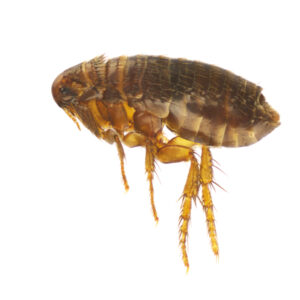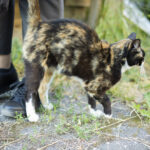
Need Help? Call Us On 0161 776 9832 For Expert Pest Control Advice On How To Identify Pest Infestations And Help Solve Your Pest Problem.
Youngs Pest Control Flea Treatment In Reddish
At Youngs Pest Control, we understand the difficulty of dealing with flea infestations. That's why we're here to help. We offer personalized pest control solutions for homes and businesses in the area. Our experienced technicians are committed to using safe and effective methods to eliminate fleas. We are a part of the National Pest Technician Association (NPTA) and have been in the industry for over 15 years, so all our work is of the highest standard.
offer personalized pest control solutions for homes and businesses in the area. Our experienced technicians are committed to using safe and effective methods to eliminate fleas. We are a part of the National Pest Technician Association (NPTA) and have been in the industry for over 15 years, so all our work is of the highest standard.
We at Youngs Pest Control are a local family-run business that strives to keep properties free of fleas for you and your family. Our technicians are experts in the field, so if fleas have taken over, don't hesitate to give us a call.
Some of the services we offer include :
- Flea eradication
- Inspections
- Treatments
- Follow up services
- Prevention Tips
At Youngs Pest Control, we understand how important it is to feel safe and secure in your home. That's why our team of experts is dedicated to providing top-notch flea treatment services that are both effective and affordable. With years of experience under our belts, we know exactly what it takes to eliminate these pesky critters from your home and prevent them from returning. So if you're tired of feeling like a guest in your own house, don't hesitate to give us a call - we've got you covered!
Unveiling the Mechanics: How Do Fleas Spread?
Fleas are small, wingless insects that are known for their ability to jump long distances. They are external parasites that feed on the blood of mammals and birds, including humans. Fleas are notorious for their ability to spread quickly and infest various environments. Let's delve into the mechanics of how fleas spread:
- Jumping: Fleas have incredibly strong legs that allow them to jump impressive distances relative to their size. They can jump up to 150 times their body length, enabling them to move easily between hosts or across different environments. This remarkable jumping ability is one of the key factors in their spread.
- Host-to-Host Transmission: Fleas primarily spread by jumping from one host to another. When an animal or human becomes infested with fleas, the parasites move through their fur or hair until they find a suitable feeding spot. When the flea is ready to move on, it jumps off the host in search of a new one. This host-to-host transmission allows fleas to spread rapidly, particularly in environments with a high population of potential hosts.
- Environmental Infestation: Fleas can also spread by infesting the environment. Once a female flea finds a host and feeds on its blood, she will lay eggs in the host's fur or hair. These eggs are not sticky and easily fall off the host onto the surrounding environment, such as bedding, carpets, or cracks in floors. The eggs hatch into larvae, which then develop into pupae and eventually emerge as adult fleas. These newly emerged fleas can jump onto a passing host, continuing the cycle of infestation.
- Human Factors: Human activities can also contribute to the spread of fleas. For example, fleas can be inadvertently carried into new areas on clothing, belongings, or even on other infested animals. This can occur when a person visits an infested area or comes into contact with an infected animal.
The Vital Importance of Treating a Flea Infestation
You may need to realize the vital importance of promptly treating a flea infestation, as these pests can cause significant harm to both you and your pets. Fleas are notorious for transmitting diseases such as bubonic plague, typhus, and cat scratch fever, which can be life-threatening if left untreated. Additionally, flea bites can lead to intense itching and irritation, making it difficult to concentrate or even carry out daily tasks. Not only that, but some animals can develop an allergic reaction to flea saliva, known as flea allergy dermatitis, which results in itching, hair loss, and skin infections.
Flea infestations should be treated with urgency due to their rapid reproduction rate. A single female flea can lay up to 350 eggs in a week while surviving for several months without a host. This means that a small infestation can quickly spiral out of control into a large-scale problem if not addressed immediately. Eradicating fleas from your environment is also challenging since they easily latch onto carpets, furniture, and other areas where pets spend their time. Fortunately, at Youngs Pest Control, we offer reliable and effective flea treatment solutions that will help keep your home free from these pesky parasites.
Essential Pre-Treatment Preparations: What You Need to Know
Before receiving a flea treatment, it's essential to prepare your home appropriately. Our pest control professionals will need easy access to all areas of your home, so start by clearing clutter from floors and surfaces. This includes toys, shoes, and any other items that may be lying around. Next, move furniture away from walls to give our technician access to baseboards and other hard-to-reach areas.
Once you have cleared the space for treatment, it's time to clean thoroughly. Vacuuming is an essential step in eliminating fleas as it helps remove any eggs or larvae present in carpets, rugs, and furniture. Be sure to vacuum upholstered furniture thoroughly, including under cushions where debris will have collected. After vacuuming is complete, dispose of the vacuum bag or contents in a sealed plastic bag outside your home. Finally, wash any bedding, linens, and clothing in hot water, followed by high-heat drying to kill any fleas or eggs that may be present before receiving flea treatment from pest control professionals.
Post-Treatment Guidelines: What to Do After Treating Fleas
After the flea treatment has been completed, it is important to follow post-treatment guidelines to ensure the complete removal of fleas from your home. We recommend vacuuming carpets, rugs, furniture, and drapes thoroughly to remove any remaining fleas or eggs that may be hiding. Remember to empty your vacuum cleaner outside immediately after use. Additionally, it is essential to wash all bedding and fabrics in hot water above 95°F (35°C) and dry them on the highest setting possible. This will kill any fleas or eggs that may be present.
It is also important to monitor for any signs of fleas after the treatment has been completed. Keep an eye out for any scratching or biting behaviour from your pets, as this could indicate a flea infestation. If you notice any signs of fleas, contact your local pest control professional in Reddish to schedule a follow-up treatment if necessary. Finally, keep people and pets away from treated surfaces until they are completely dry for about 4-5 hours after application, as bare skin coming into contact with the insecticide when wet can cause irritation. By following these post-treatment guidelines, you can ensure effective flea removal and prevent future infestations from occurring in your home.
 In conclusion, a flea infestation can be extremely harmful not only to your beloved pets but to your entire family as well. Therefore, contacting a pest control company like ours at Young's Pest Control in Reddish is wise for eliminating fleas from your home. The exceptional service offered by Youngs, coupled with our wealth of experience in dealing with flea infestation, makes them the ideal choice for homeowners. Our professional flea treatments, combined with pre-treatment and post-treatment guidelines, assure you that your home is free from these pesky parasites. Contact us today for quick and affordable flea eradication.
In conclusion, a flea infestation can be extremely harmful not only to your beloved pets but to your entire family as well. Therefore, contacting a pest control company like ours at Young's Pest Control in Reddish is wise for eliminating fleas from your home. The exceptional service offered by Youngs, coupled with our wealth of experience in dealing with flea infestation, makes them the ideal choice for homeowners. Our professional flea treatments, combined with pre-treatment and post-treatment guidelines, assure you that your home is free from these pesky parasites. Contact us today for quick and affordable flea eradication.
We also service Neighboring areas like:
SK5
